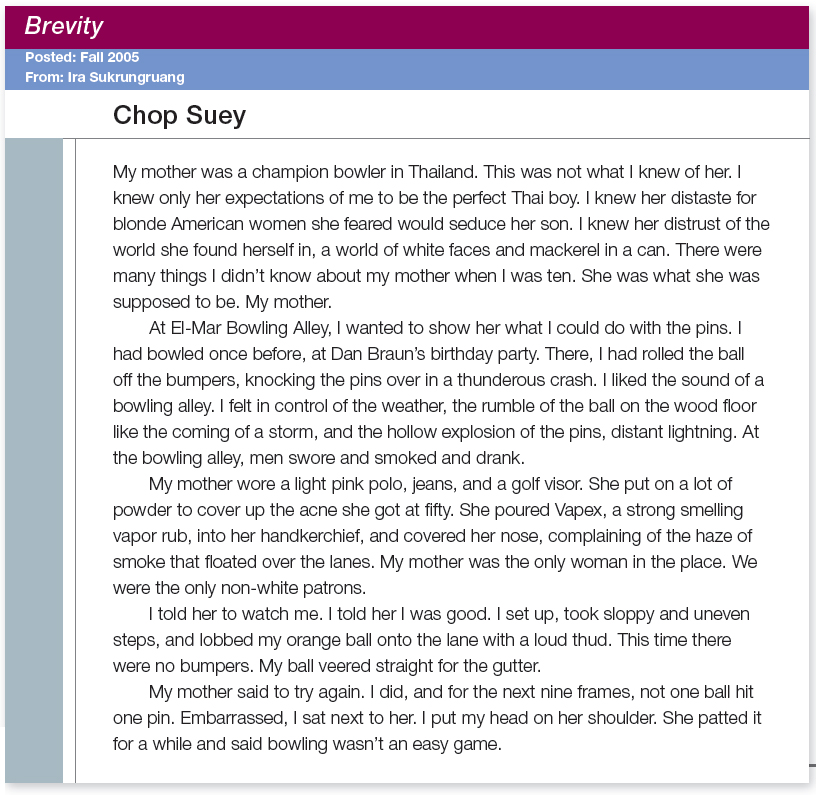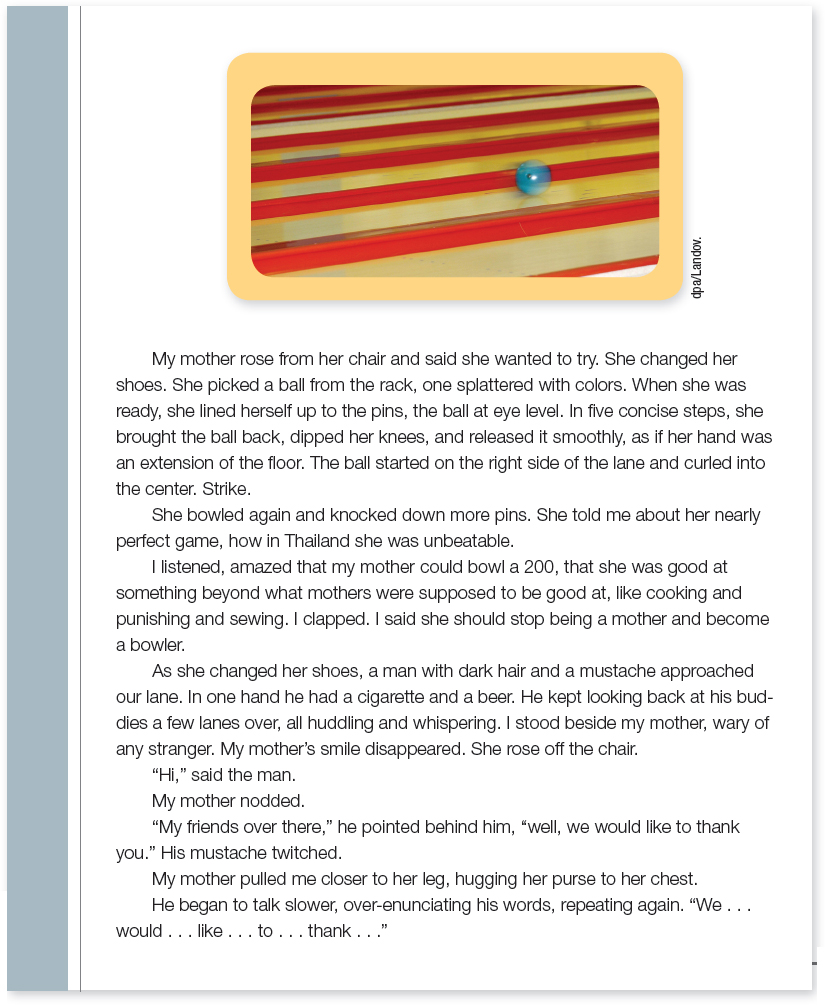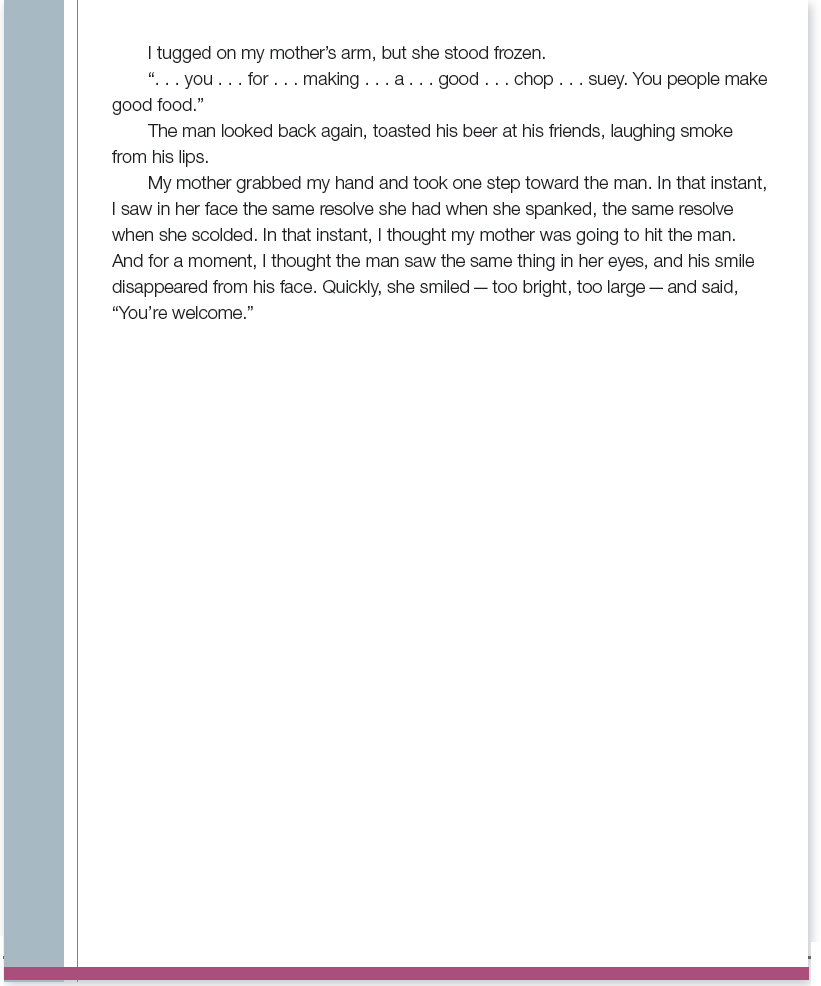Narratives: Readings
MEMOIR
Ira Sukrungruang writes and teaches creative nonfiction. He is the author of Talk Thai: The Adventures of Buddhist Boy (2010), a memoir of growing up Thai American, and the coeditor of What Are You Looking At? The First Fat Fiction Anthology (2003) and Scoot Over, Skinny: The Fat Nonfiction Anthology (2005). This story comes from the online journal Brevity (www.brevitymag.com), which collects very short creative nonfiction.



Reading the Genre
Question
1. This story begins as a pleasant memory of the author’s youth but ends with a difficult and awkward encounter. This development comes as a surprise to readers, just as it did to Sukrungruang and his mother. When the story ends, what emotions are you left with as a reader? What would you have wanted to do if you had been in the bowling alley that day? (See Chapter 30, “Introductions and Conclusions”.)
Question
2. At the end of this story, in the dialogue between Sukrungruang’s mother and the man with “dark hair and a mustache,” Sukrungruang uses ellipses to insert pauses in the discussion. What effect do these pauses have on the story and on you as a reader? (See “Develop major characters through action and dialogue” and “Pace the story”.)
Question
3. It’s not easy to realistically depict action in a personal narrative, but using just a few details, Sukrungruang does a good job of capturing the act of throwing a bowling ball. Reread his descriptions of his own bad bowling and his mother’s excellent bowling. Try and identify the adjectives and adverbs he uses, as well as the metaphors. (See “Use figures of speech”.)
Question
4. WRITING: The events Sukrungruang recounts in this story reveal a turning point in his life, a moment when he learns something important. Can you identify the turning points in your life when you discovered important things you hadn’t known before? Choose one of these moments and write a narrative about this event.
Question
5. WRITING: Sukrungruang’s narrative comes from a journal that publishes only nonfiction stories shorter than 750 words, and Naomi Shihab Nye’s narrative was published in an anthology of very short essays. Smith magazine has recently taken the concept of brevity many steps further by asking writers to create six-